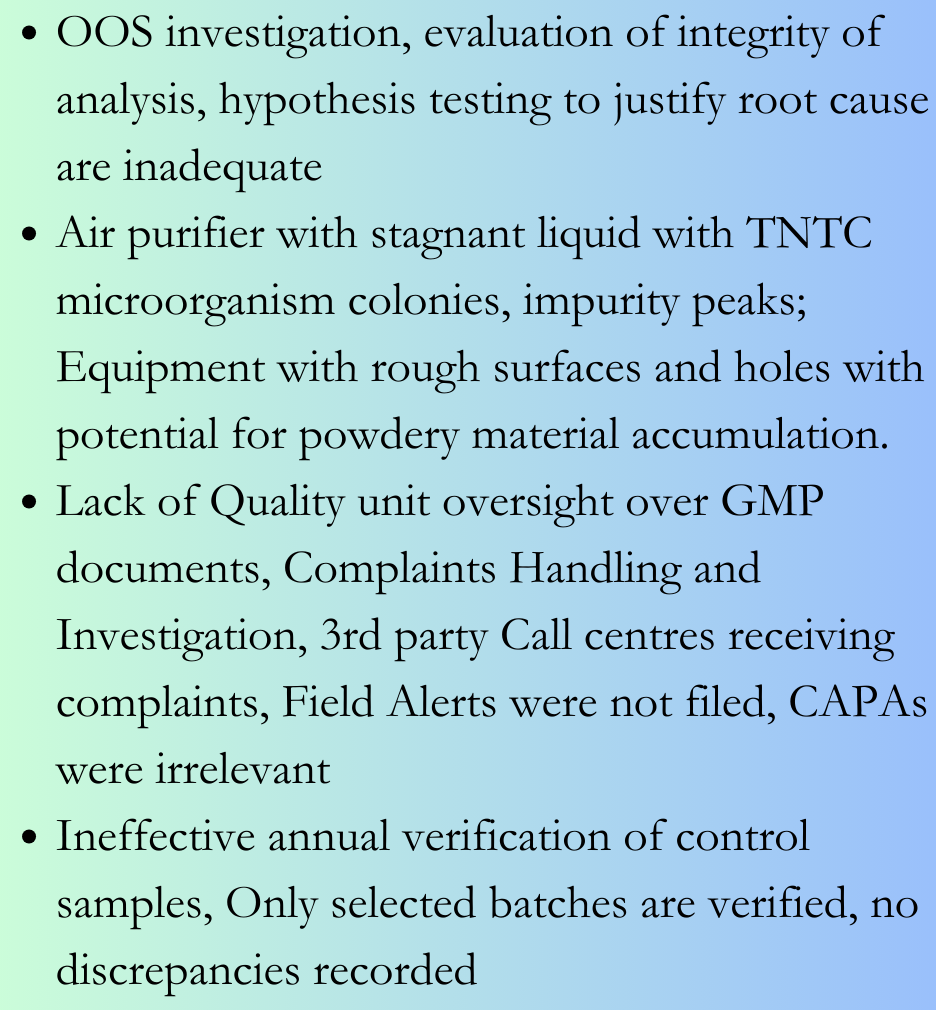

Discussion forum for Pharma Quality events, Regulatory Actions
Warning letters, 483s, Recalls, Import Alerts, Audit observations

Warning letters, 483s, Recalls, Import Alerts, Audit observations


The USFDA 483 issued to Sun Pharma, Dadra unit in India (FEI 3004561553) published by USFDA demonstrates the depths audits go to identify non compliances and highlights the evolving expectations of auditors. The site was inspected by USFDA investigator Pratik S Upadhyay in December 2023 with six observations in a detailed 17 page USFDA 483 issued. The USFDA 483 identified inadequate Quality Unit oversight in several areas: Control of GMP (Good Manufacturing Practice) documents, Complaint investigations, Filing of field alert reports, Annual verification of reserve (control) samples. Other observations pertain to Inadequate OOS investigation and Facility maintenance.
Sun Pharma Dadra USFDA 483 (December 2023) / Pratik S Upadhyay
An OOS for dissolution was invalidated with root cause likelihood of dissolution basket falling off from shaft without scientifically demonstrating it through hypothesis testing. Preliminary investigation did not identify any laboratory error. The root cause was of dissolution basket falling off was concluded based on interview of QC analysts, who admitted the dissolution checklist was filled without verifying actuals. Even after identifying the data falsification by analysts, there was no evaluation of integrity of all analysis performed by the analysts. OOS and FAR was closed after repeat analysis by second analyst
An OOS for unknown peak in related substance analysis was invalidated with root cause assigned as sample solution preparation error with respect to improper rinsing of volumetric flask or sample handling. However the unknown peak was present at BLQ (Below Quantifiable Level) in other stability samples analysed in same sample set suggesting that the unknown peak is not due to contamination from dirty glassware. Also there was no effort to identify the peak / source of the peak by looking into analysis and sample preparation of other products in the same area as OOS batch.
Stagnant liquid was observed inside Air purification unit (APU) which on testing was found to have TNTC (too numerous to count) colonies of microorganisms, yeast and mould and also peaks due to APIs and impurities. As per the Firm stagnant liquid was probably due to leakage of water after last preventive maintenance. Holes and rough surfaces were observed in an equipment with potential for powdery material to get accumulated. There were no swab samples collected and evaluated for chemical and microbial parameters from these areas during change over cleaning. This has potential for contamination of drug products manufactured where this equipment is used.
Lack of Quality Unit oversight
Leave a Comment
You must be logged in to post a comment.